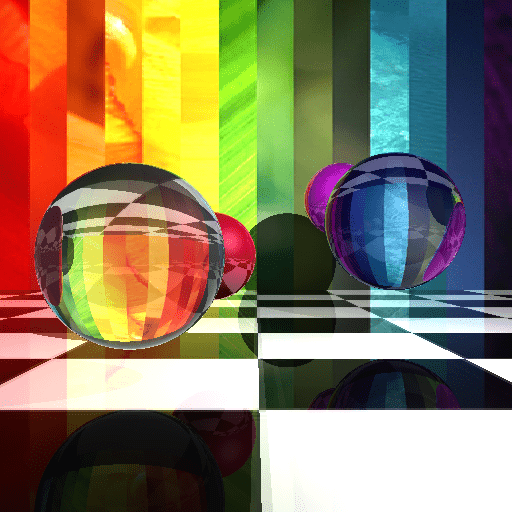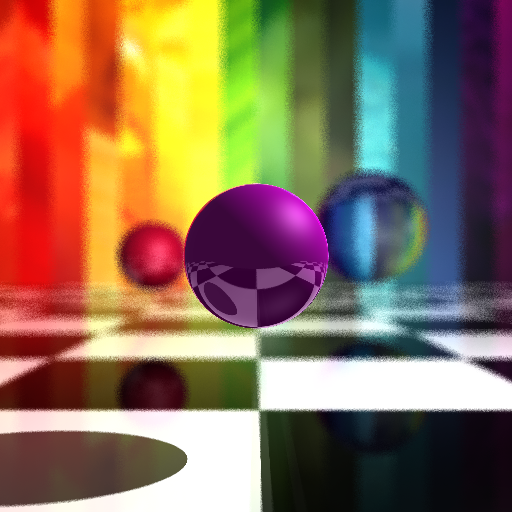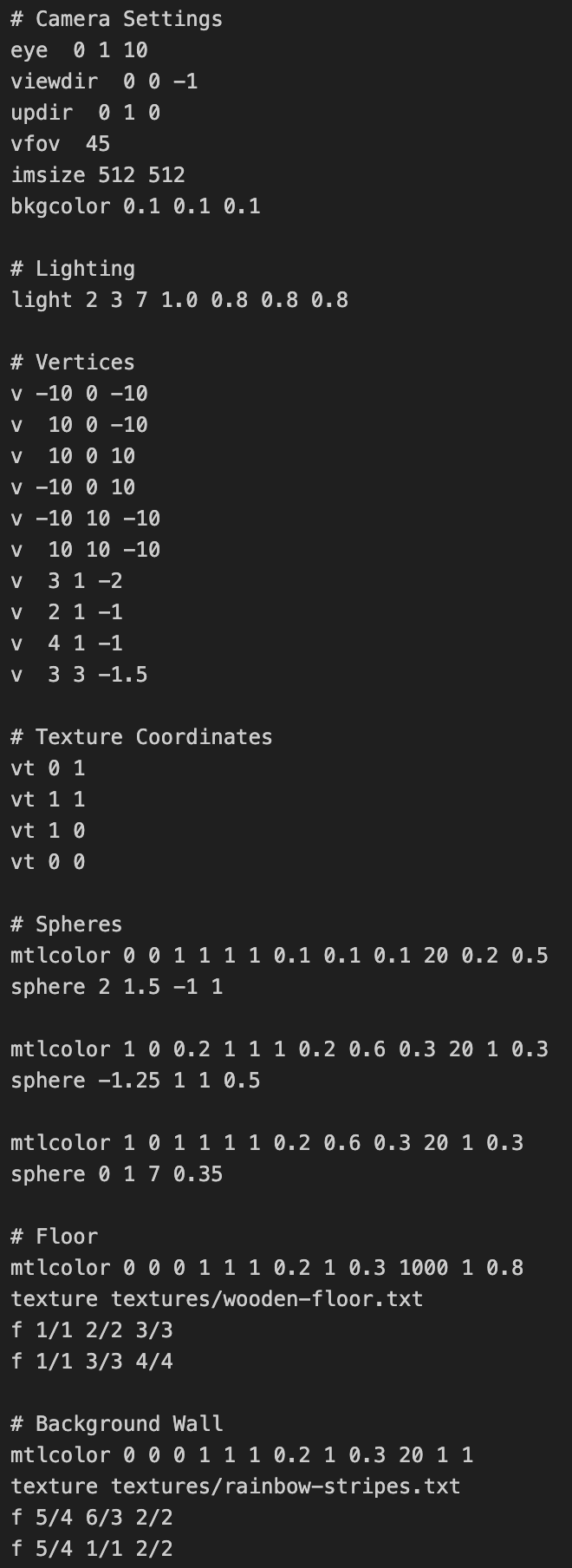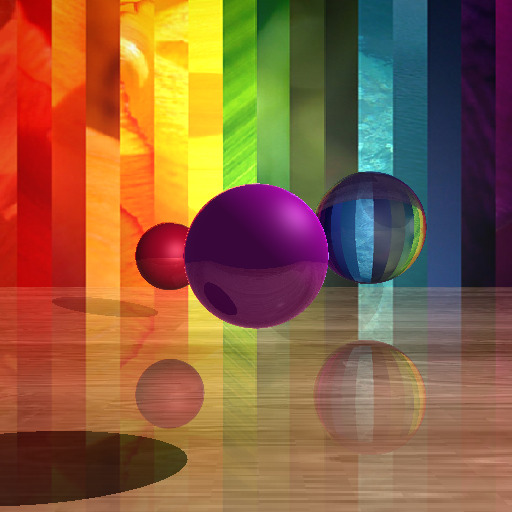Ray Tracing Renderer
GitHubA ray tracing renderer built from scratch in C++.

Key Features
- Ambient, diffuse and specular shading
- Directional lights
- Attenuated point lights
- Depthcueing
- Hard shadows
- Soft shadows
- Reflection
- Transparency
- Refraction
- Depth of field
- Texture mapping
- OBJ support
- BVH acceleration
Description
I built this ray tracer from scratch using C++ as part of a semester-long project in CSCI 5607: Computer Graphics.
This ray tracer is capable of rendering scenes with diffuse shading, multiple light sources, light attenuation, reflections, transparency & refraction, soft shadows, depth of field, texture mapping and depthcueing. It utilizes a bounding volume hierarchy (BVH) to efficiently render scenes with more complex geometry, and also has a custom "scene description" file parser that supports OBJ models with normals, uvs and material properties.
Challenges
With the ability to interpret arbitrary OBJ models via my custom file parser, I thought it would be fun to test my ray tracer on some higher complexity models, such as the classic Stanford bunny. Unfortunately, when I first attempted to render the Stanford bunny it took well over 10 minutes to complete. This made it practically impossible to setup a compelling scene since every time I wanted to test a new camera position, tweak the lighting or change the material properties I was forced to wait minutes for a render to complete.
To speed things up, I knew I needed to utilize some sort of spacial data structure to avoid the O(N²) computation of checking every ray against every triangle for intersection. To achieve this I implemented a basic bounding volume hierarchy, partitioning the scene into a tree of bounding boxes, which decreased render times for complex models from minutes to seconds!
While using a BVH allowed for the efficient rendering of much more complex scenes than my ray tracer was initially designed for, and sub-second rendering speeds for simple scenes, if I were to build a ray tracer from scratch again I would absolutely do so utilizing the GPU instead of the CPU.
Demo




Tools Used
Languages: C++
Software: Make, Git